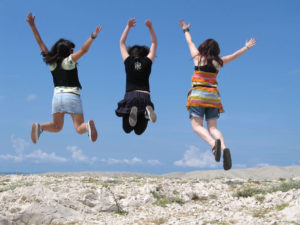Victoria Alarcon
Sports & Health Editor
When hundreds went in search for the fountain of youth, they didn’t know the key to preventing aging was actually just regular exercise.
A McMaster University study on two different sets of genetically disadvantaged mice – one set on a treadmill and another not – showed exercising delays symptoms of getting older.
“I believe we have very compelling evidence that clearly shows that endurance exercise is a lifestyle approach that improves whole body mitochondrial function, which is critical for reducing morbidity and mortality. Exercise truly is the fountain of youth,” said Adeel Safdar, lead author of the study and senior PhD student, in a press release. 
The treadmill mice exercised three times a week for at least 45 minutes, and were later found to have organs as healthy as mice without genetic disadvantages; the dormant mice were balding, and greying.
The findings were no surprise to York fitness centre assistant John Bruce, who knows a lot about the benefits of exercising.
“It’s common sense, because our bodies were designed to move, and when you’re not actively using your body in that fashion, things will deteriorate,” said Bruce. “It’s no different than your car. Your car is designed to function, so if you allow that to sit for a period of time, it’s not delaying the aging of the vehicle, it’s probably hurting that vehicle because it’s not moving.”
Earlier studies done on exercise found a clear association between being physically active and living longer. Leslie Alford, physiotherapist and lecturer at the University of East Anglia, noted “the literature reviewed shows that how long people live and how healthy they are depends on a complex mix of factors, including their lifestyle.”
As to whether these findings will get York students moving, that’s another debate, says Bruce. “If you’re talking to students here, they may not be thinking that long-term – some do, some don’t. Right now they are more concerned with the immediate and the aesthetic appearance, sport-related benefits, and things that speak to them right now. It’s a little tough to sell, the idea that you’re going to have a healthier middle-age or old age because you’re active now.”
For first-year York psychology student Shmisa Basil, signs of aging may not get her going to the gym, but the study has definitely given her something to think about.
“What I fear most is not being able to do things you could do when you were younger. Your body becomes non-flexible. When you’re young you can do so many things and you have all this energy, and when you’re old you can’t.”
The study may not get more students going to the gym, but Bruce believes other benefits will: risk of various diseases such as arthritis, certain kinds of cancer and cardiovascular disease at such an early age is low if you exercise regularly.
There are 1000 to 1200 students that use the Tait McKenzie Centre on a normal basis, and to reap all the benefits of exercise, Bruce noted they should exercise 30 to 60 minutes every day, even if it’s light walking.
What students fear most about aging
- Relying on other people
- No energy to get around
- Breathing trouble
- Not being as flexible
- Wrinkles
- Balding
Facts about the study
Fertility and isolation
The mice who were not physically active were socially isolated, less fertile and had damaged muscle tissue
Youth
Mice who did exercise looked younger, and had healthier organs
Baldness and greying
The mice who did not exercise also showed physical symptoms of aging such as balding and greying


